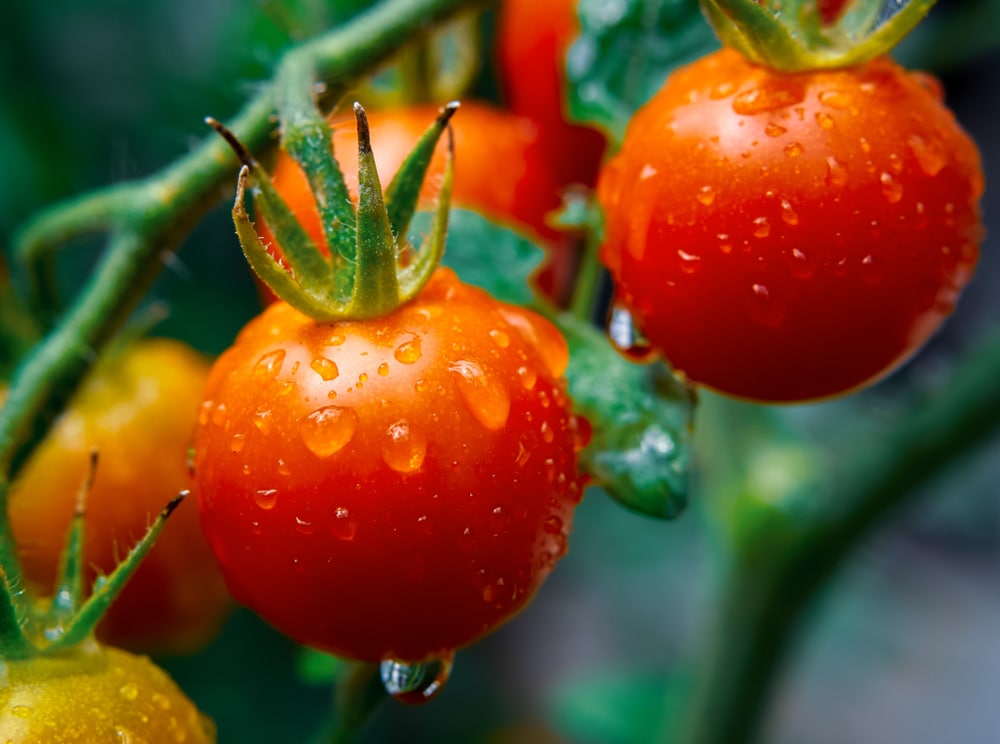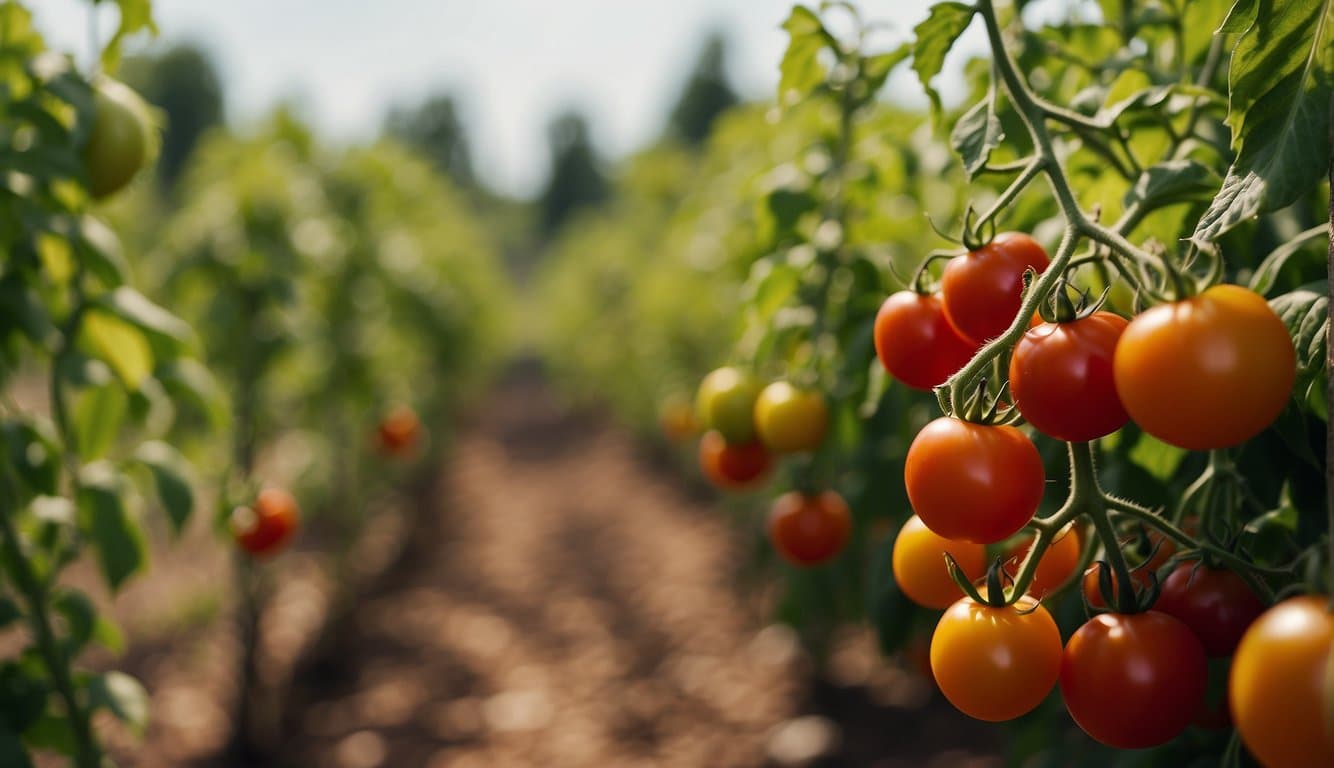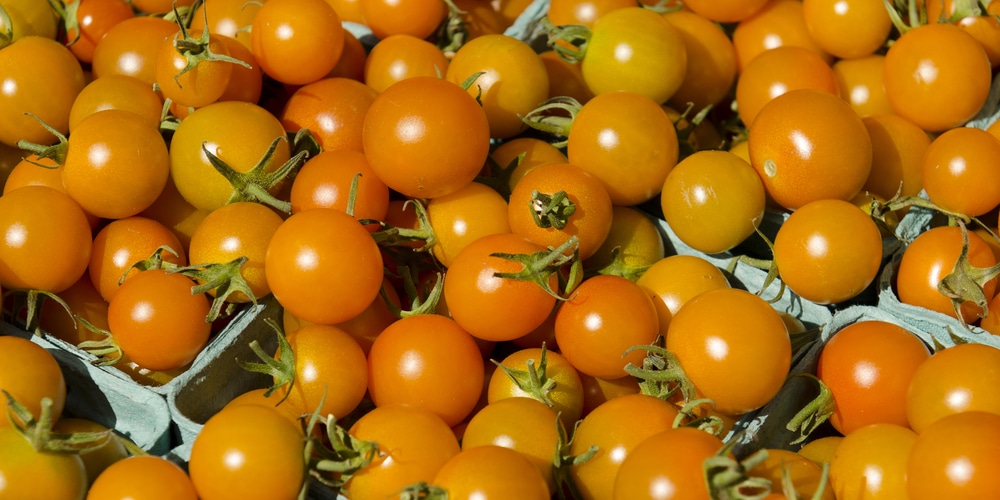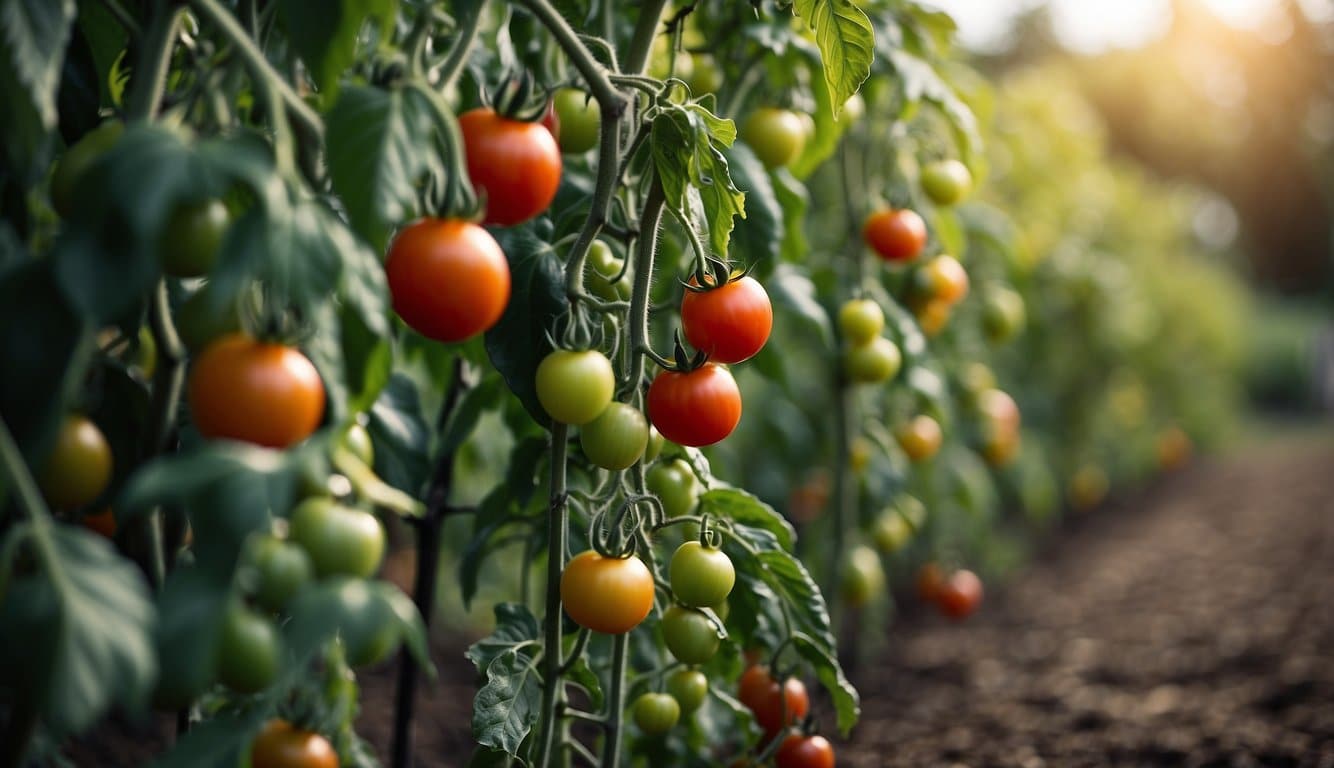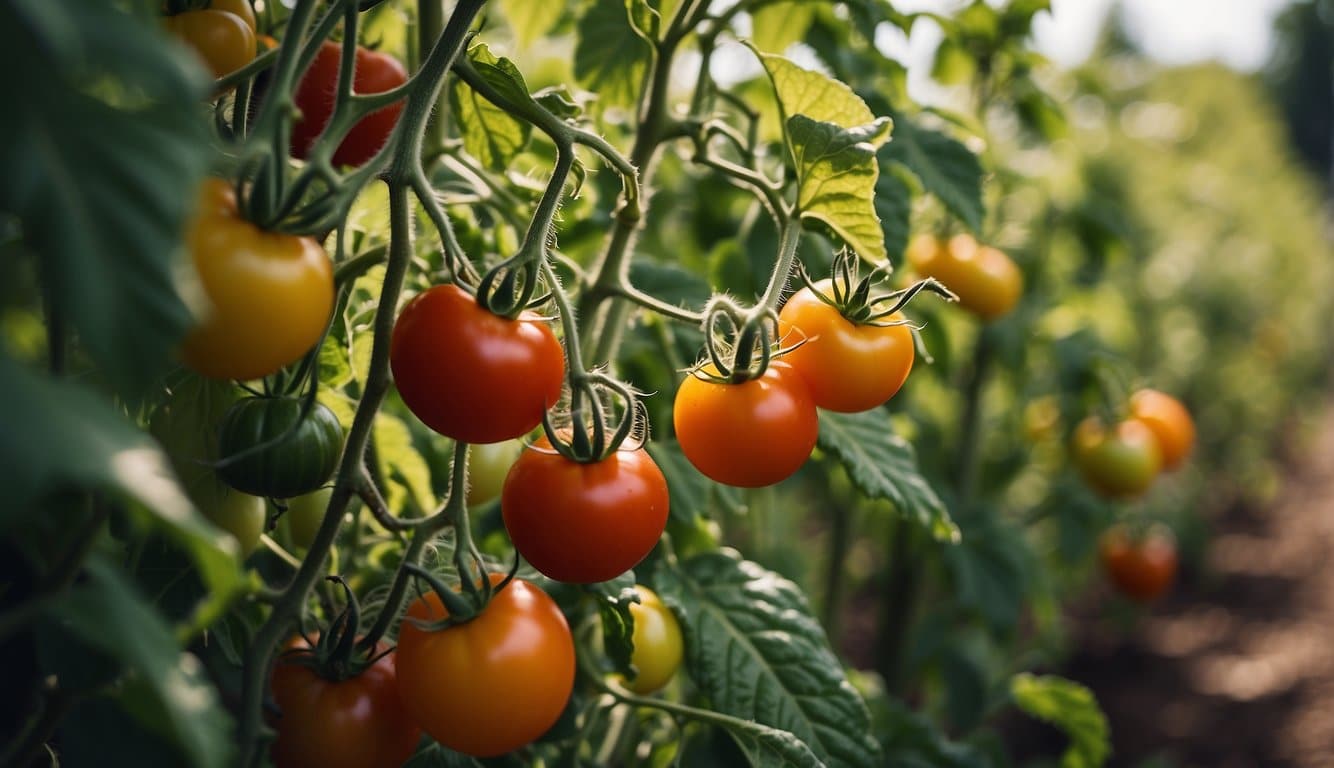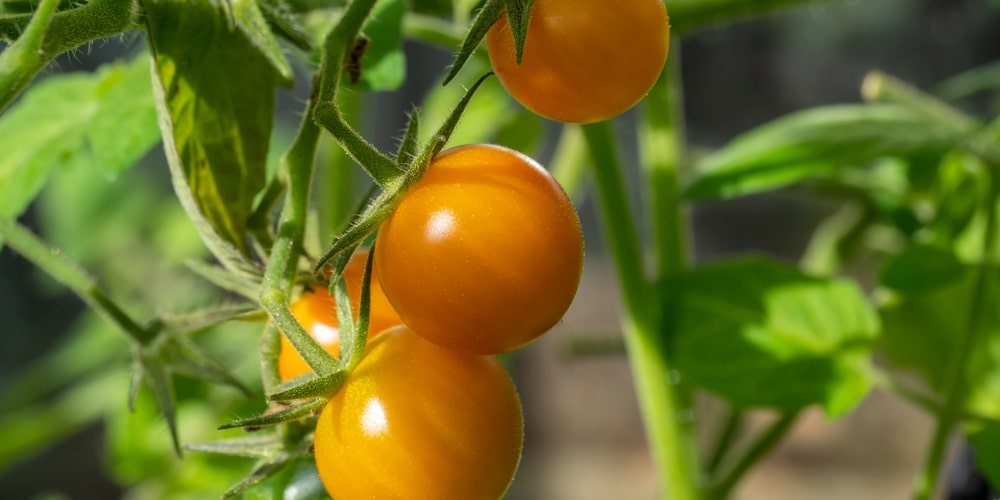| Question | What’s the best time of year to plant tomatoes in Delaware? |
|---|---|
| Answer | After the last frost date, usually late April to early May. |
| More Info |
|
In Delaware, the ideal time to plant tomatoes outdoors is after the risk of frost has passed, typically from late April to early May.
Given Delaware’s climate, starting tomato seeds indoors around 6-8 weeks before the expected last frost date helps ensure that the plants are robust enough for transplanting. This preparation allows tomatoes to establish themselves and produce fruit before the hottest part of summer.
For those interested in a fall harvest, a second planting in late July to early August can be considered, though success depends on the selection of quick-maturing varieties and the season’s weather patterns.
Knowing the best time to plant is crucial for gardeners looking to maximize their tomato yield.
Selecting the right tomato varieties is just as important as timing.
Roma tomatoes, for example, are a popular choice for their robust flavor and suitability for canning and freezing.
Home gardeners in Delaware can also explore other varieties that mature quickly to ensure a successful harvest before the first frost of the year.
Careful consideration of planting schedules, variety selection, and cultural practices will contribute to the success of tomato crops in Delaware gardens.
Key Takeaways
- Delaware’s climate is well-suited for growing a variety of tomatoes, with consideration to proper timing.
- Choosing the right tomato varieties, such as Roma tomatoes, can enhance harvesting potential.
- Understanding planting schedules and cultivation tips is key to growing success in Delaware’s unique conditions.
Understanding Delaware’s Climate for Tomato Cultivation
Delaware’s climate presents an interesting landscape for growing tomatoes.
The state falls largely within hardiness zone 7, which varies slightly across regions. Here, tomato growers can capitalize on the moderate temperatures to cultivate a fruitful harvest.
The state experiences a range of temperatures throughout the year, with coastal Sussex County classified as zone 7b, meaning winter lows hover between 5 to 10 °F (-15 to -12.2 °C).
Northern Delaware falls under zone 7a, facing slightly colder winters with temperatures falling between 0 to 5 °F (-17.8 to -15 °C).
These conditions influence when and which tomato varieties should be planted.
Ideal Planting Conditions:
- Soil temperature should be a minimum of 57°F (14°C) before planting.
- Optimal soil temperatures range between 65°F and 70°F (18°C and 21°C).
Soil Requirements:
- Well-draining sandy loam soil.
- Slightly acidic to neutral pH levels (6.2 to 6.8).
- High in nutrients like phosphorus, potassium, calcium, and magnesium.
The growing season typically kicks off after the last frost. In Delaware, this usually means tomato seedlings can be moved outdoors from late April through early May.
- Staked or caged plants: Allow 18 to 24 inches between plants.
- Unstaked determinate plants: Space them 12 to 24 inches apart.
This precise spacing helps improve air circulation, which is essential in Delaware’s humid summers, and reduces the risk of plant diseases common to tomatoes.
Selecting Tomato Varieties for Delaware Gardens
When gardeners in Delaware look to add tomatoes to their plant repertoire, they must consider two main categories—whether to opt for hybrid or heirloom types—as well as the different maturation times of varieties suited for their growing season.
Hybrid vs. Heirloom Tomatoes
Hybrid tomatoes are the product of crossbreeding two different varieties, often resulting in plants that are disease-resistant and more consistently yielding. These are ideal for gardeners who prioritize a hardy crop and uniformity in fruit size and shape.
For example, the ‘Rutgers’ tomato is a well-adapted hybrid known for its disease resistance and excellent flavor.
In contrast, heirloom tomatoes are open-pollinated varieties that have been cultivated for many years—their seeds save true-to-type from one generation to the next.
They are often celebrated for their diverse flavors and unique shapes and colors. They may require more attentive care to protect against diseases and pests but reward the gardener with exceptional taste and varieties steeped in history.
Early, Midseason, and Late Varieties
- Early Varieties: These tomatoes are the first to harvest, perfect for those eager to taste homegrown tomatoes as soon as possible. They generally mature in less than 60 days.An example of an early variety suitable for Delaware gardens is the ‘Early Girl,’ which yields fruit quickly and reliably throughout the growing season.
- Midseason Varieties: Maturing between 60-80 days, midseason tomatoes strike a balance between early and late types. They offer a sustained harvest during the peak of summer.’Rutgers’ falls into this category, producing a flavorful crop that’s versatile for both fresh use and canning.
- Late Varieties: Gardeners with a longer growing season can benefit from late-maturing tomatoes, which take more than 80 days to ripen.These varieties, including some heirlooms, are often the last to be harvested and can provide fresh tomatoes until the first frosts threaten. They require more patience but are well-suited to extend the harvesting period.
Optimal Planting Times for Tomatoes in Delaware
In Delaware, gardeners should be vigilant about the timing of planting tomatoes to ensure they thrive. The prime window for planting tomatoes aligns with the local frost dates to avoid cold damage.
Indoor Sowing:
Start sowing tomato seeds indoors from February 20th to March 10th. This early start indoors protects the plants from the unpredictable winter frost that may linger.
Outdoor Planting:
Transplant seedlings outside when the threat of frost has passed. Typically, this period is between April and May, but local weather forecasts should be monitored for more precise timing.
Depending on your location within Delaware, approximate outdoor planting dates are as follows:
| City | Earliest Planting Date | Latest Planting Date |
|---|---|---|
| Wilmington | April 20 | October 18 |
It is paramount that growers ensure nighttime temperatures are consistently above 50°F and soil temperatures have warmed to around 60°F before moving plants outdoors.
Cultural Practices and Tips for Tomato Growing Success
Tomato cultivation requires understanding the local climate, soil, and proper management techniques to achieve the best yield. In Delaware, growers must pay careful attention to timing as the growing season can significantly impact tomato success.
Soil Preparation: The foundation for healthy tomatoes begins with the soil.
Delaware gardeners should enrich their soil with organic matter and ensure it is well-draining. A pH level between 6.0 and 6.8 is ideal for tomatoes.
Variety Selection: Growers have a plethora of tomato varieties to choose from.
Determinate varieties may be preferred for a uniform harvest, while indeterminate varieties continue to grow and produce fruit throughout the season.
Selecting disease-resistant hybrids can be beneficial due to their bred resistance to blight and fusarium wilt.
| Temperature for Growth | Temperature Range |
|---|---|
| Optimum Growth | 80° – 90°F |
| Germination | 70° – 80°F |
| Minimum Night Temp. | 50° – 55°F |
Timing is also vital; growers should plant after the last frost date and consider in-row spacing to maximize sunlight and air circulation.
Too little spacing can lead to diseases due to moisture and poor air flow.
Watering: Consistent watering is key, particularly during fruit setting. Water deeply and less frequently to encourage strong root development.
Pruning and Support: Supporting plants with stakes or cages can prevent fruits from touching the ground, reducing the risk of disease. Pruning unnecessary leaves will improve air circulation and sunlight exposure.
Frequently Asked Questions
In Delaware, timing and variety selection are crucial to ensure a bountiful tomato harvest. These questions delve into the specifics of planting and growing tomatoes tailored to Delaware’s unique growing conditions.
What is the ideal planting time for tomatoes in Delaware’s growing season?
In Delaware, gardeners should aim to plant tomatoes after the last frost date, which is typically around late April to early May. Seedlings should be hardened off and then transplanted to the garden to take full advantage of the growing season.
Which tomato varieties are best suited for Delaware’s climate and soil conditions?
Varieties such as ‘Celebrity,’ ‘Early Girl,’ and ‘Brandywine’ are well-suited for Delaware’s climate. These varieties adapt well to the mid-Atlantic region’s temperature fluctuations and can thrive in Delaware’s soil when proper care is taken.
How does Delaware’s USDA hardiness zone affect tomato planting schedules?
Delaware falls within USDA hardiness zones 7a to 7b. This regional classification means that tomato planting schedules should account for the last frost dates and the length of the growing season, which can vary within these zones.
Can tomatoes be effectively rotated with other vegetables in a Delaware garden?
Crop rotation is beneficial in Delaware gardens. Tomatoes can be rotated with vegetables like beans, peas, or leafy greens, which helps manage soil health and reduce disease and pest pressures.
What are the temperature requirements for growing tomatoes successfully in Delaware?
Tomatoes require a consistent daytime temperature between 70 to 85 degrees Fahrenheit, with night temperatures ideally above 50 degrees Fahrenheit. Delaware’s summer temperatures generally provide a good growing environment for tomatoes.
What are the best practices for extending the tomato growing season in Delaware?
Gardeners in Delaware can extend the tomato growing season by using row covers to protect the plants from early fall frosts. They can also extend the season by selecting varieties with shorter days to maturity.
Starting seeds indoors can also provide a head start on the season.
Last update on 2025-06-06 / Affiliate links / Images from Amazon Product Advertising API
